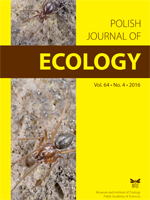Although urea is the simplest N-containing organic compound ubiquitous in all aquatic environments, its role in N-nutrition of planktonic biota and relevance for eutrophication of freshwater ecosystems is still insufficiently defined and often bypassed. The dynamics of production of autochthonous urea as well as maximal potential net ureolytic activity (net URA Vmax) of phyto- and bacterioplakton were studied in mesocosm experiment and verified during the field studies conducted in the Great Mazurian Lake system (GMLS). Analysis of the obtained results revealed that the proteins were the main autochthonous urea precursors. Urea concentration in the studied mesocosms and in GMLS surface waters was positively correlated with flagellate, ciliate and crustacean biomass and, less evidently, with bacterial biomass (BB). In surface waters of GMLS net URA Vmax, similarly as urea concentrations, increased with their trophic status. Analysis of correlation of potential ureolytic activity with chlorophylla, (Chla) BB and L-leucine aminopeptidase activity (AMP) in lakes of different trophic status suggests that although both groups of planktonic microorganisms participated in urea decomposition processes, in eutrophic ones bacterial decomposition of urea is more evident. In highly eutrophic lakes excess of phosphorus induced higher nitrogen requirement resulting in the increase in protein decomposition rate. Intensified protein degradation resulted faster urea production, which finally induced higher ureolytic activity of planktonic microorganisms. In profundal waters of GMLS potential ureolytic activity was distinctly lower than in surface waters. This was caused by low temperature of hypolymnetic waters, inhibitory effect of hydrogen sulphide and lack of phytoplankton, which is known as a primary urea consumer.
How to translate text using browser tools
1 December 2016
The Role of Planktonic Organisms in Urea Metabolism in Lakes of Temperate Zone - Case Study
Waldemar Siuda,
Ryszard J. Chróst,
Krystyna Kalinowska,
Jolanta Ejsmont-Karabin,
Bartosz Kiersztyn
ACCESS THE FULL ARTICLE

Polish Journal of Ecology
Vol. 64 • No. 4
December 2016
Vol. 64 • No. 4
December 2016
autochthonous urea production
Great Mazurian Lake system
lakes of temperate zone
mesocosms
planktonic microorganisms
urea precursors
ureolytic activity




